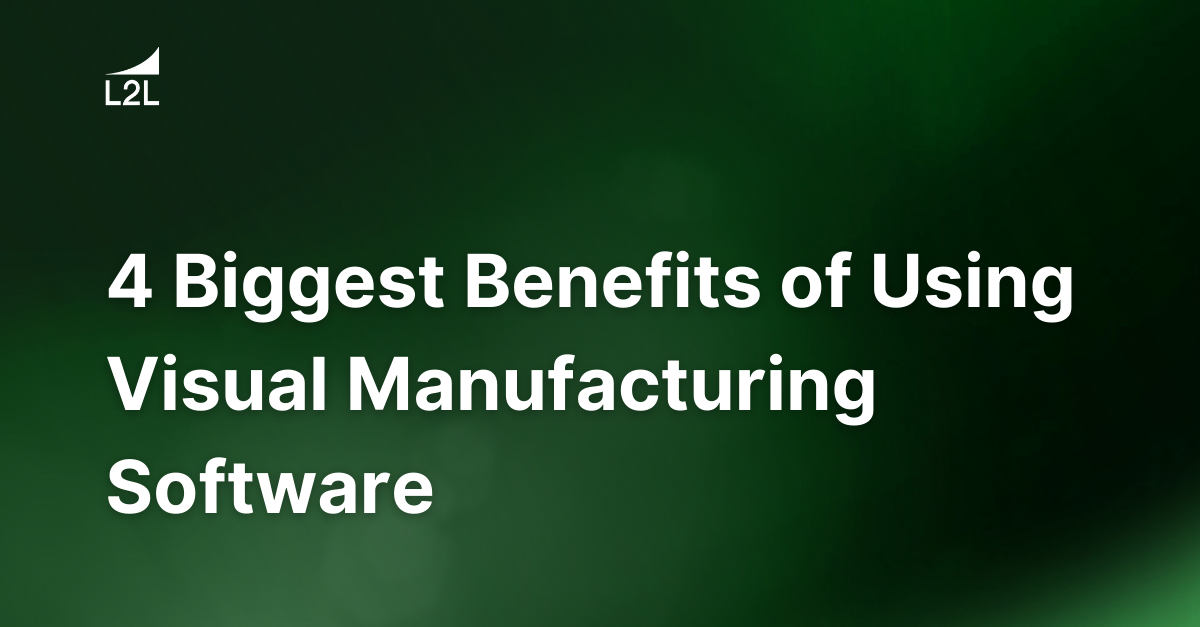
Visual manufacturing software has become one of the most significant tools to leverage in manufacturing today. Effective visual manufacturing software can accelerate growth opportunities and allow sites to identify the current conditions.
In today’s digital manufacturing environment, the ability to quickly and objectively separate what's normal from what's abnormal is essential to manufacturing success. Waste and opportunity exist within every process. The ability to clearly identify waste, collect data to reduce and eliminate waste, and find opportunities for improvement using visual manufacturing software can quickly accelerate your plant's success.
The Digital Factory
The concept of a digital factory and the tools used to create visual manufacturing aren't new. During my decades in manufacturing, I've used a number of methods to create a digital visual manufacturing environment.
In the past, one of the most frequently used methods to capture equipment's current condition and separate normal from abnormal functions has been as simple as manual checklists. These checklists were the beginning steps to capturing and reporting information in what was as close to "real-time" as possible. With manually defined escalation points or "living Pareto charts," if you will, visual representation at the point of use provided a realistic starting point for execution.
One of the simplest approaches in the past that still holds significant value today is implementing live visual Pareto charts to reflect scrap and rework collection.
Making Your Factory Visual Will Drive Improvement
Over the years in manufacturing, I've learned that employees and teams truly want to make a difference. However, in many instances, we don't provide great tools or information regarding the processes that promote and assist employees in making a difference. In many of these instances, simply allowing processes to become visual and objective can be a game-changer.
When you make the waste, problem, or issue visual, objective, and identifiable at a glance, anyone can immediately understand the current conditions. Furthermore, you'll have an easier time promoting change. Finger-pointing does not endear people to change. Visual manufacturing software allows teams to grasp the current conditions and quickly determine, "Are we winning or losing?" or "Are we better or worse?"
They can then base decisions on the live results and understand the strategy to improve these results. They can answer questions like:
-
Is our current plan or method working?
-
Do we need to change our approach to achieve better results?
When teams have live, accurate data, they'll more easily adapt their game plan and approach to achieve better results. Teams want to do good work; give them the tools and information needed in order to achieve great results!
Visual Manufacturing Software and Tools
As simple or complex as visual tools and visual manufacturing software may be today, they're helpful for diagnosing troublesome processes and situations. Historically, the most common issue manufacturers had with visualizing issues was determining what to do when an anomaly was identified.
-
How do we distinguish normal vs abnormal?
-
Who does what and when?
-
What is our reaction plan to the anomaly?
Many of these approaches are great concepts in theory. However, they have many holes and are highly subjective in terms of direct escalations or reaction plans.
The industry has become much better at identifying issues and clearly separating normal from abnormal. Many visual manufacturing software systems and tools have become great finders. However, maintenance doesn't simply stop at visually identifying abnormal conditions.
More importantly, we must use digital tools to create and promote escalations, notifications, problem-solving, and follow-up measures.
Making Sense of Data from Visual Manufacturing Software
Using L2L's CloudDISPATCH, you can capture critical data from a plethora of sources during the manufacturing process. These sources vary from manual operator input to PLC and sensor-captured data.
Regardless of the source, a key question is whether you're using this data and information to input and help promote a Visual Manufacturing environment. Do you capture data just to capture it, or do you capitalize on this powerful information and share it in a visual and actionable way?
It's important that you take full advantage of how your data can be used to connect and share information between complicated processes.
Four Benefits of Using Visual Manufacturing Software
Here are the four biggest benefits I can expect today when utilizing powerful production-proven visual manufacturing software?
- Visual Management: Tools, Charts, and Graphs
- Visual indicators of normal vs abnormal
- Autonomous follow-up: Autonomous triggers creating decision points with continued follow-up tasks that are tailored to that specific event
- Escalation triggers - Event-specific factors that drive escalation
- Condition-based escalations
- Metrics and Score Cards
- Dashboards to display and promote progress
- On-demand, at a glance live Pareto metrics
- Scorecards: fluid visual tools
- Real-time trends: are you winning or losing?
- Multi-level drill-down capabilities: event, time, area, machine, response, results
- Problem-Solving
- Promotes team problem solving
- Closed-loop process
- Kaizen / continuous improvement
- Identify anomalies, track progress, schedule, and prioritize
- Accountability
- Complete history and traceability
- Full changelog history: who, when, why, how, where
- Individual accountability within a team environment
- Assign, track, and follow up on action tasks
- Actionable data: Immediately available, transparent, and accessible across all levels of your organization
Using Visual Manufacturing Software to Manage Remotely
Visual manufacturing software will never replace going to Gemba (where the real work takes place: the shop floor). Understanding the current condition from ground zero can provide great advantages and insights into critical scenarios. However, fully utilizing digital visual manufacturing software offers us opportunities for improvement, including reducing or eliminating waste entirely.
We have the opportunity to capture a wide variety of live objective information in real-time from manufacturing lines or cells in one fell swoop. Even multiple manufacturing sites and across locations, irrespective of geography. Modern manufacturing absolutely requires this advantage.
Are you ready to eliminate the subjectivity from your site's daily results and metrics? Are you ready to connect the complicated process to share and gather information? It's time to graduate to a production-proven system like L2L, made for manufacturers y manufacturers. Our closed-loop Visual Manufacturing Software provides essential value with significant ROI with minimal resource and financial investment.
To schedule a free consultation with L2L, click below:
Revisions
Original version: 18 July 2024
Written by: Evelyn DuJack
Reviewed by: Daan Assen
Please read our editorial process for more information
Related Posts
Subscribe to Our Blog
We won't spam you, we promise. Only informative stuff about manufacturing, that's all.





